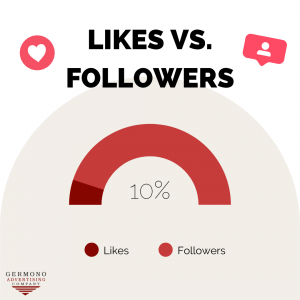
10 Sep How to Determine Successful Marketing
By Justice Abbott
As marketers, we’re always updating and perfecting our campaigns. But, the big question is… what does a successful marketing campaign look like? If you’ve recently completed a campaign and it didn’t go as expected, here are some tips and guides on things to improve on for your next campaign.
Defining Your Target Audience
We all want likes, but when you peel back the layers of your marketing plan, do you have a target audience defined? Here’s a question to ask yourself… can your business take on 100 customers today? Realistically, that might tax your business. Focus on a narrow niche instead. This will help you cater to your specific audience and avoid the possibility of your content falling on “deaf ears” or “blind eyes”.
When starting out, it can be difficult trying to determine exactly who your ideal customer is. Here are some questions we recommend asking when creating your ideal customer goal:
Do they have hobbies?
Where do they live?
What is the age bracket of this customer?
Having these 3 questions answered can increase the potential success for your campaign as you will have a narrowed niche to specifically create content for.
Where to Start Your Marketing Campaign
Now that we’ve explained how to define your target audience, you may be wondering where and how do you actually start your campaign to produce the most success? These four steps are a great way to set yourself up for success when kicking off your campaign:
1. Establish goals.
Ask yourself, is this a campaign for branding, increased foot traffic, appointments? Establishing clear goals for what you hope to accomplish from your campaign is important as it will help you to know what platforms and marketing techniques you will use.
2. Focus on niche.
Relating back to defining your target audience, you will want to ask, who is the ideal customer for this campaign? As we mentioned, narrowing down your specific audience will allow you to cater to those who will likely produce the best results for your business.
3. Set KPI’s
KPI is a just a fancy way of saying metrics and terminology versus spend. It stands for Key Performance Indicators, which are quantifiable measures that help you determine how effective your marketing campaign is.
4. Ask for feedback
Asking for feedback is critical before you launch any campaign! It allows an “outside” eye to look at your campaign and provide any pointers, tips, or edits that you may need to make before publicly launching. We can help with this by the way- contact us for our hourly services!
Have a Reference Document

We recommend aiming for a 10% Like Follower Ratio as it’s a good indicator that your social media campaign is a success. This means for accounts with about 1,000 followers, you’re averaging around 200 likes per post, which means 10% of your audience is engaging.

Developing a marketing campaign is one thing, but determining its success and effectiveness is another. It’s crucial to make sure you know how to identify and continue a successful marketing campaign, and these steps should help you do just that!
Defining your target audience, starting your campaign the right way, having a reference document, and measuring your goals are things you should constantly be doing as your business grows. Executing these things will ensure a successful marketing campaign every time!
Need help determining if your current campaign is successful or if your future campaign will be successful? Shoot me an email today at justice@germono.com to receive feedback or clarification on any of our steps for success!
